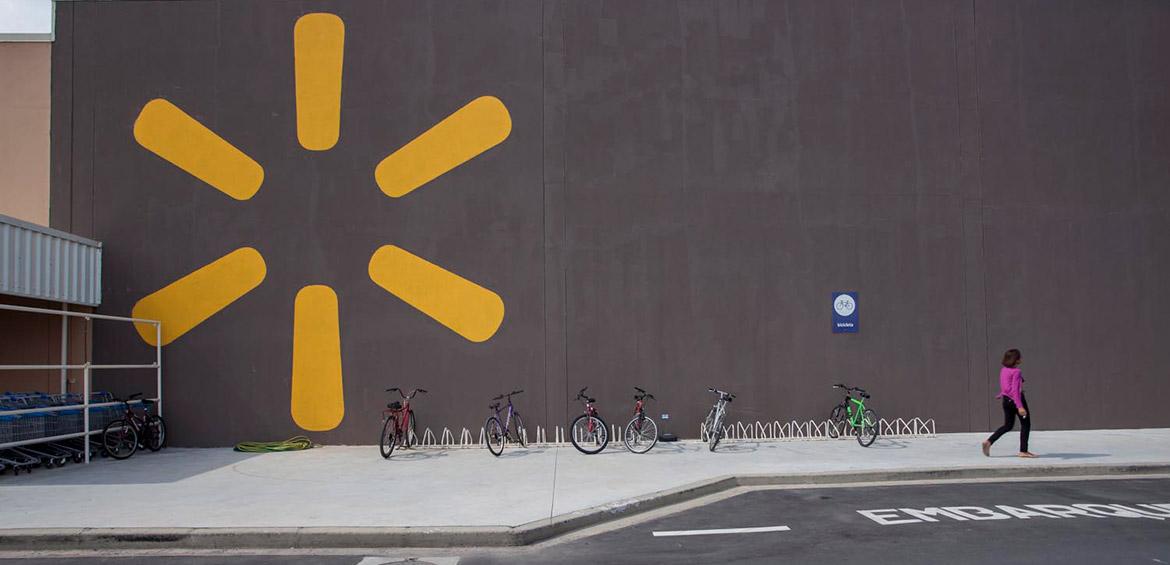Walmart Brasil continued with its actions based on using sustainable solutions in its new stores and renovating units in 2014. The directives for the construction sustainable units include:
- Use of LED lighting
- Doors in refrigeration equipment (vertical and horizontal)
- Energy control module installed throughout the store
- Installation of sanitary parts and showers with reduced water consumption
- Replacement of high consumption air conditioning equipment
- Installation of water and sewage treatment stations
- Buying energy on the open market
- Studies to adopt solar panels

| Direct energy consumption | 2013 | 2014 | Variation (%) |
|---|---|---|---|
| Diesel (Gj) | 243,740.30 | 188,546.06 | -22.60% |
| Gas LPG (Gj) | 161,633.89 | 137,868.39 | -14.70% |
| Gas NG (Gj) | 6,735.59 | 6,762.19 | 0.40% |
Water
| Waste management GRI EN22 | ||||
|---|---|---|---|---|
| Material | Destination | Weight in tons | ||
| 2014 | 2013 | 2012 | ||
| Paper and cardboard | Recycled | 43,664 | 41,622 | 26,579 |
| Plastics | Recycled | 3,808 | 3,566 | 2,851 |
| Metals | Recycled | 251 | 182 | 304 |
| Wood | Recycled | 1,048 | 271 | 1,037 |
| Glass | Recycled | 102 | 74 | 73 |
| Hazardous waste | Recycled | 57 | 52 | 15 |
| Organic | Compost and animal feed | 4,396 | 3,991 | 5,169 |
| Electronic | Recycled | 244 | 26 | 4 |
| Vegetable oil | Recycled | 861 | 570 | 98 |
| Bottles and cans | Recycled | 21 | 57 | 39 |
| Tires (units) | Recycled | 0 | 0 | - |
| Batteries | Recycled | 4 | 10 | 27 |
| Others | 1,038 | 4,252 | 5 | |
| Total waste | 146,166 | 140,834 | 92,948 | |
| Waste directed to landfills | 90,673 | 86,159 | 55,970 | |
| Total waste diverted from landfills | 55,494 | 54,675 | 36,978 | |
| % of waste diverted from landfills | 38 | 39 | 40 | |
The importance of responsible water consumption has led the company to maintain a Comitê de Água (Water Committee) and consider the possibility of using tankers and the opening and reopening of artesian wells, along with raising awareness and encouraging reducing water and electrical energy consumption.
Walmart Brasil carried out a pilot project at the unit in Tamboré (SP) in 2014 when it started using new more economical faucets, sanitary parts, bowls and showers. This led to a reduction of 44.2% in water consumption. The system will be expanded to all the other stores in the chain during 2015.
Gases
Walmart follows the Kyoto Protocol and consolidated the swap of R22 gas used by the refrigeration equipment in its stores for R404A gas and Glicol and by RA10 or R407 gas for the air conditioning system as it is regarded as being more environmentally friendly since it does not destroy the ozone layer.
Waste
One of the pillars of Walmart's sustainability is to reduce the amount of waste sent to landfills. The program was initiated in Brazil in 2008 and involves initiatives to reuse and recycle waste as well as reduce waste generation. Of the 146,166 tons of waste generated in 2014, 38% was not sent to landfills.
The year was also marked by the expansion of the program to manage the least generated waste. This led to an increase of 79% in the collection of electro-electronic waste, hazardous waste and vegetable oil, which was disposed of correctly.
Of the 146,166 tons of waste generated in, 38% went to an alternative destination
79% more electro-electronic and hazardous waste and vegetable oil was collected and disposed of in an environmentally correct way.
